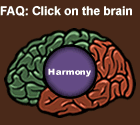- What are the elements of a common language that would create the Harmony to help depersonalize issues across departments and get them working together with a customer focus?
- We taught all the tools and techniques, but nothing happened. What’s missing?
- Why do we need to develop change management skills as managers and designate organizational “change agents?”
- How do we spell R-E-S-U-L-T-S?
- We’ve stopped blaming, but people still avoid accountability. What can we do?
- What kind of information is required by an integrated system?
- How do we tie performance measures to results?
- What do you mean we need to change from “unconscious” to “conscious” business?
What are the elements of a common language that would create the Harmony to help depersonalize issues across departments and get them working together with a customer focus?
“Quality,” when integrated into a business strategy, is present in virtually every aspect of every employee’s everyday work.
The ultimate goal is to create a system that can successfully create and sustain significant improvements of any type, in any culture for any business.
Brian Joiner’s very practical synthesis of Deming’s work is summarized by three elements seen as a triangle:
- Nothing less than an organizational obsession with “quality” (and eliminating waste),
- A “scientific approach” to solving everyday work problems (using data),
- An “all one team” atmosphere to facilitate the needed breaking down of barriers for better (internal and external) customer service.
Thinking in terms of processes will be a most profound cultural change. Automatically blaming processes, not people, when things go wrong will reduce organizational defensiveness, allowing fertile ground for quality to become part of the organizational DNA through the everyday practices of:
- Customer orientation
- Continuous improvement
- Elimination of waste in all forms
- Prevention, not detection
- Reduction of variation
- Statistical thinking and use of data
- Adherence to best-known methods
- Use of best available tools
- Respect for people and their knowledge
- Results-based personal feedback: Emotionally intelligent culture
We taught all the tools and techniques, but nothing happened. What’s missing?
Time to go beyond “logic.”
The main result of the flurry of organizational quality training efforts the last 20 years has been creating increased awareness of the need to think in terms of processes, better improvement tools, and better technical and administrative information. This is indeed the “engine” of quality, but engines need the “fuel” of focused cultural energy from humans teeming with emotions.
Like it or not, fear and defensiveness tend to be the rule within most organizations, and longstanding cultural patterns are ingrained. Emotional blockages due to bad relationships will determine the amount, quality, and timeliness of information flow between people. This can no longer be addressed in an ad hoc fashion, but must be dealt with formally and managed.
What about improving the quality of feedback processes, relationships, cultural perceptions and feelings to unify people in a common purpose?
Why do we need to develop change management skills as managers and designate organizational “change agents?”
“Things are the way they are because they got that way. And unless we understand how they got that way, they are going to stay that way.”
The current culture is “perfectly designed to get the results it is already getting…and will continue to get.” Deep down, people KNOW what to do. So, why don’t they do it? Every culture has a “belief system” driving behaviors – what is tolerated creates culture.
- Leaders must take it upon themselves, formally, to create experiences that foster beliefs that will drive needed actions that produce the desired results.
- Conversely, leaders must stop recreating old experiences (or even the perception of them) that foster old beliefs that will then drive actions that produce unwanted results.
New results = New beliefs
How do we spell R-E-S-U-L-T-S?
| Respect | Realizing that everyone is doing the best he/she knows how, given their unique value “programming” | |
| Empathy | Developing a sensitivity to other people’s perceptions being different from yours | |
| Scanning | Becoming aware of and planning to deal with, formally, situational/environmental “land mines” – others’ and your own. | |
| Unity | The ability to create and keep the perspective of identifying and respecting the needs of the business | |
| Love | Committing to colleagues’ success by gently coaching them via treating difficult issues as unintended behavior– without “attacking” the human being | |
| Truth / Trust | The honest expression of feelings – “The truth is the truth is the truth…and if you can’t talk about it, you can’t fix it…Period!”; “If you don’t trust the people, you make them untrustworthy.” (Lao Tzu [Wing (1986)]) | |
| Self – awareness** | A firm personal commitment: “I and I alone am responsible for the values I bring to work, the behaviors they make me exhibit, their effects on people’s beliefs about me, and the consequences of my behavior.” |
We’ve stopped blaming, but people still avoid accountability. What can we do?
Part of the new belief system for is an expectation for personal and organizational accountability…and a new definition of accountability. It does not mean “to account for.”
Changing adult behavior is extremely difficult — rational descriptions and one-shot internal seminars change nothing. The true organizational challenge is motivating individuals to choose to change through experiencing behaviors that consistently telegraph the following values:
- ‘The only person I can change and speak for is myself,’
- ‘I will exhibit zero tolerance for blame (including myself). Our culture will “Blame the process, not the person”,’
- ‘There will be: No whining allowed… to go (gently) unchallenged,’
- ‘I will hold myself accountable for holding myself accountable… including appropriately owning and channeling my emotional reactions to situations,’
- ‘Tense situations will be resolved by identifying and respecting the needs of the business,’
- ‘If I can’t change a situation, I will probably have to change the way I think about it.’
- ‘I can visit “pity city,” but I can’t live there.’
What kind of information is required by an integrated system?
A mid-level manager’s reply when asked how much information he gets a month: “18 pounds.”
Integrated behavior is made possible by integrated information used to navigate the terrain of purpose.
Customers – What do we need to understand those whom we serve?
- It is from them that purpose is derived.
Are both long term and short term objectives deployed into plans, daily work schedules, and the very psyches of all those in the system.
- Can any employee, at any moment, say exactly how what he or she is doing fits into the organizational agenda for the year?
Management processes
- Is planning improving and has it become part of the routine job of management?
- Is human resource management improving (e.g., realignment of training, reinvention of reward systems, redrawing of boundaries and supervisory relationships)?
- Is a redesign of the budget process needed, based in statistical thinking?
Information itself
- Design of more “fluid,” simple, efficient data structures
- Data must be “pulled,” not “pushed,” (“Nobody ever asks me what I want to know.”)
- Smooth exchange of data,
- Improved, simplified analysis and display of data
- What is the difference is between the key variables we ought to record and collect and those we ought to throw away?
How do we tie performance measures to results?
Balanced Scorecards (also known as organizational dashboards) act as a visual catalyst to align the organizational measurement system to translate and communicate strategy and tactics more precisely by answering:
- How are we doing with respect to our core process?
- How are we doing with respect to our strategy?
- Who are the customer groups that we wish to “hear from” on a monthly basis and what measures could predict their future satisfaction with the organization?
- Is this still the right strategy?
Here’s an interesting way to present it to executives:
You are the CEO and have gone on a three-month vacation. You are allowed to look at four (financial, customer satisfaction, or whatever category) graphs every month to tell you about the health of the company. Which four graphs would you want to see?
What do you mean we need to change from “unconscious” to “conscious” business?
Unconscious Business: Businesses need to realize that they are “perfectly designed” to get the results they are already getting…and will continue to get.
Repeating the same patterns and problems over and over again and not identifying yourselves as the source of those patterns and problems will only cause…the same results! Despite passionate desire for improvement (i.e., new results), you will need new cultural beliefs to drive these new results.
What is tolerated creates culture!
Things to consider in transitioning to Conscious Business:
- If a pattern or problem repeats itself, we look for the source of the pattern in ourselves.
- We commit to learning instead of defensiveness in toxic interactions
- We become skilled at thanking people for giving us feedback, instead of punishing them.
- We make conscious commitments and hold scrupulously to those commitments
- A new belief for all: “The only person I can change is myself: It starts with me!”


